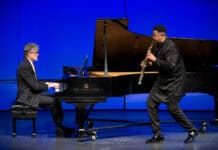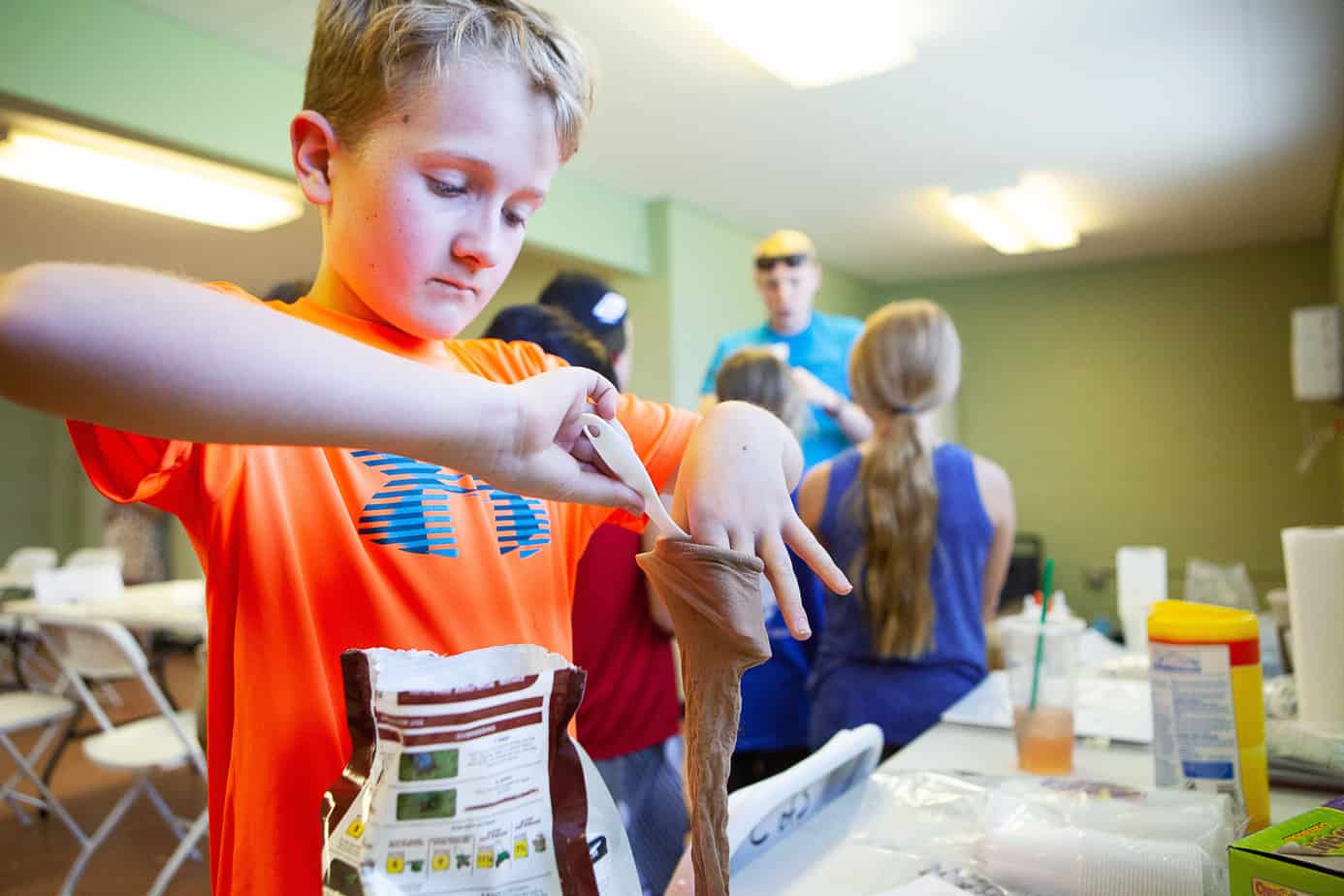“Hey kids? Who wants to answer some questions?” Josh Bergeleen, Community Programs Coordinator at Arizona Science Center, asked the campers.
Immediately, four kids started running over from where they were playing. Nash Hoffbauer, 12, Caden Burns, 13, Dani Sherman, 9, and Kyden Blasi, 9, were part of the Arizona Science Center Camp Innovation: Wizard Science class that took place last week at Posse Grounds Park in partnership with the Parks and Recreation Department.
Albeit a little shy at first, they were willing to talk. “It’s really good, I learned about stars…” Sherman said when asked if she liked the camp so far.
“Flashlights and those wand things … circuits,” Hoffbauer added to the list of things they had learned.
“Wands and mermaid tears,” Sherman continued, talking about an experiment — or “potion” — they worked on to learn about the differences between acids and bases.
“In the way I teach, in general, I let them see the reactions. Yesterday we had goldenrod paper, which detects how acidic or how alkaline something is,” Bergeleen had explained before calling the kids. “So, when you put a base on it … it turns bright red. And I introduced it by saying “we are making potions” but really I’m showing a chemical reaction, then explaining it.”
The instructor said one of the kids asked what were acids and bases, which he explained, but was sure it went over their heads.
“I think it’s still rewarding because it took five seconds of my time, and they get to hear these words and they become curious and they keep that curiosity going. If nothing else, you saw that you can change colors of something using a chemical solution. That’s a pretty cool thing for a 7-year-old to understand.”
However, maybe that was not the case for one of his students. While they called the base mashup unicorn horn and the acidic solution mermaid tears, Hoffbauer showed his focus was on the actual content: Baking soda and vinegar oil.
“One of the chemicals turns the paper, the yellow gold-ish paper, red and the… vinegar oil turns it back and erases it,” he said, continuing on the topic of what they had learned. “And the mermaid tears and all that turns it invisible, and you have to use a LED light to look at the message.”
He also said he likes to do experiments — or “blow stuff up” — at home with his father and the two had to “shoot up [toothpaste] in the air, like, 25 feet.” So, clearly, science was of his interest already.
Bergeleen explained the idea of adding “wizardry” to the science camp was due to the prevalence of magic in today’s popular culture, with series such as Harry Potter. However, he said science still seems to be the main attraction. “This has been interesting because I think we had one or two kids
“I think that you can never teach science too young and sometimes we don’t value science as much as we should,” he continued. “The other really valuable thing is that it builds curiosity and it teaches children to ask questions. In a way, it’s creating human beings that are going to be life-long learners. The more curious and the more intelligent our population is, that’s good for every nation. There is no downside to having kids engage in hands-on learning.”
When asked what would they say if a friend asked if they should attend science camp next year, Sherman offered, “I would tell them to because you learn new things like how different ingredients make different things.”
The next question was what they would learn next and yells of “We don’t know” and “He doesn’t tell us” were the answers, followed by a discussion about Bergeleen never telling them anything and comparison’s of his class dynamics to their school teachers. They were done answering questions, and it was also time to go back to the magical experiments. That afternoon, they would plant grass seeds — or better, grow “mandrakes.”
Natasha Heinz can be reached at 282-7795 ext. 117, or email at nheinz@larsonnewspapers.com



















